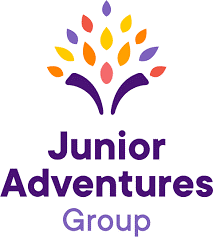Intent
Our Computing curriculum is designed around the four key areas outlined in the National Curriculum - Computer science, Information technology, Digital literacy and Online safety. We understand that a high-quality computing education will equip our children to use computational thinking and creativity to understand and change the world. Computing has deep links with mathematics, science, and design and technology, and provides insights into both natural and artificial systems.
Our curriculum fosters a sense of inclusion, social justice and diversity by ensuring all pupils (regardless of background, gender, ability, or learning needs) have equal access to learning opportunities and the digital tools necessary to succeed. We aim to challenge stereotypes within technology, promote positive representation, and encourage all pupils to see themselves as capable contributors to the digital world.
The core of Computing is computer science, in which our children are taught the principles of information and computation, how digital systems work, and how to put this knowledge to use through programming. Building on this knowledge and understanding, the children will be equipped to use information technology to create programs, systems and a range of content.
Implementation
We use the ‘Purple Mash’ scheme of work to cover the curriculum. Staff understand the importance and necessity for our children to learn basic skills from early on to prepare them for more complex learning in the Upper Phase. One hour per week is usually allocated to the teaching and learning of Computing over the course of each half term.
In the Early Years, children are provided with creative activities that fit easily within EYFS setting and puts Computing at the heart of learning. Our children develop Computing skills through meaningful experiences that cover all the prime and specific areas of learning and development. Rather than a scheme with set lessons, the early years resources are designed to integrate into the day-today routine and set-up of an early years setting with opportunities for using Mini Mash or Purple Mash as part of the Early Years curriculum to support children in working towards early learning goals.
In KS1, children continue their learning journey by using various tools and applications on the Purple Mash website. They learn how to programme using 2code and begin to be able to debug when something doesn’t work out the way they imagined. They learn about online safety and what to do if they encounter something which makes them feel uncomfortable as well as what personal information is and why it is important we don’t share it with someone on the internet. Children also use data handling software to create spreadsheets and word processing applications to practice typing on keyboards. The KS1 lessons also include creative activities like animated stories, online lego building and music making.
As children progress through KS2, the coding becomes more complex and they are able to create basic games with code. Their digital literacy skills are combined with English, Science, History and Geography. This work is word processed and presentations are created using PowerPoint. KS2 Children use applications like 2blog and 2email to practice different forms of communication using digital technology. Children explore diverse perspectives through their digital work. They consider how technology can be used to solve global issues. Topics such as AI and its ethical implications provide opportunities to reflect on fairness, bias, and social responsibility. Purple Mash topics like 3D modelling, Logo design and simulations challenge the pupils to produce different types of media.
Each year, children across the school learn about internet safety as a topic through purple mash as well as discussing these issues within their PSHE lessons. Additionally, the school celebrates safer internet day each year with school wide competitions to foster positive behaviour online.
Although most computing lessons are completed on laptops some lessons may require extra equipment. In School we have various equipment including cameras, webcams, microphones, beebots and microbits to aid in practical computing activities.
Impact
The impact of our Computing curriculum can be seen on displays around school and in saved folders within the purple mash website. It can also can be measured by speaking to the children themselves. The teaching of the Computing curriculum enables our children to use a computers with confidence. Through the teaching and learning of Computing, our children leave primary school as confident, capable and creative users of digital technology, with a secure understanding of the fundamental principles of computer science and as safe, responsible and discerning digital citizens.
Through Computing, our children grow into capable and responsible digital citizens who understand not only how to use technology effectively, but also how to do so ethically and inclusively. They leave primary school equipped with strong foundational knowledge of computer science and a thoughtful awareness of how digital tools can be used to promote fairness, accessibility, and positive change in society. Our approach ensures every child sees a place for themselves in the digital world, and feels empowered to contribute meaningfully to it.

.jpg)

.jpg)

.png)
